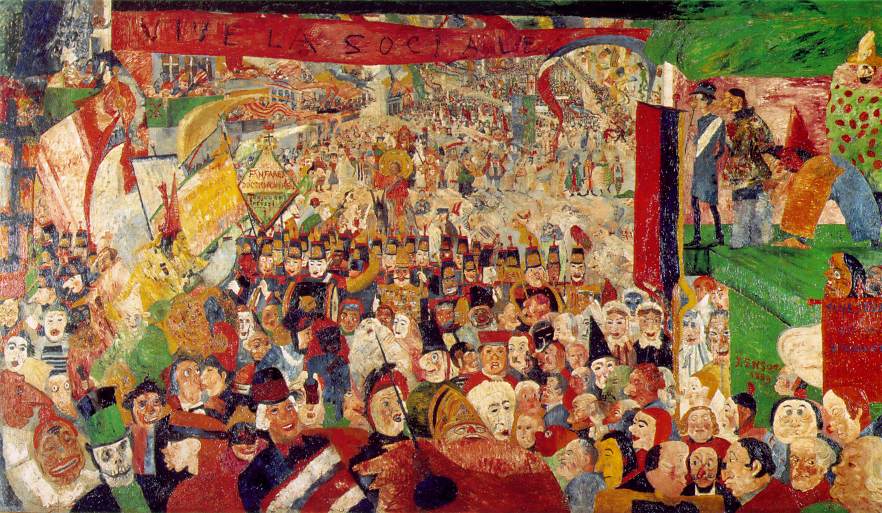
|
Featured Artist at the e.Gallery this week is a 20th Century artist of the Expressionist movement, James Ensor [Belgian, 1860-1949] Link: https://fineart.elib.com/fineart.php?dir=Alphabetical/Ensor_James |
|
|
|
|
|

|
Featured Artist at the e.Gallery this week is a 20th Century artist of the Expressionist movement, James Ensor [Belgian, 1860-1949] Link: https://fineart.elib.com/fineart.php?dir=Alphabetical/Ensor_James |
|
|
|
|
|

|
Featured Artist at the e.Gallery this week is a 17th Century artist of the Baroque movement, Pieter de Hooch [Dutch, 1629-1684] Link: https://fineart.elib.com/fineart.php?dir=Alphabetical/Hooch_Pieter_de Pieter de Hooch was born in Rotterdam in 1617, the son of a mason and a midwife. His career as a painter started in Delft. As usual in his day, he had a second string to his bow besides painting: he was an assistant to a linen merchant. De Hooch specialised in decorous interiors with merry companies of people. Views through windows or corridors into other, distant rooms often featured in his work. Like other Dutch genre painters, De Hooch sometimes gave his interiors hidden messages. After moving to Amsterdam in 1661, De Hooch’s domestic groups tended to become increasingly elegant and affluent. De Hooch eventually died in Amsterdam’s Dolhuis (madhouse). When this happened is not known for certain. |
 Cardplayers in a Sunlit Room |
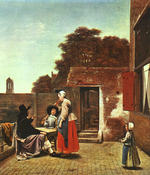 A Dutch Courtyard |
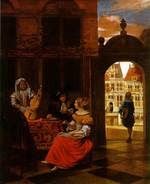 Musical Party in a Courtyard |
|

|
Featured Artist at the e.Gallery this week is a 20th Century artist of the Surrealist movement, Yves Tanguy [French, 1900-1955] Link: https://fineart.elib.com/fineart.php?dir=Alphabetical/Tanguy_Yves Raymond Georges Yves Tanguy (1900-55), was a French-born American painter, born in Brittany, France on January 5th 1900. He was originally a merchant seaman, and was drafted into the army during World War I. Tanguy was impelled to take up painting after seeing pictures by de Chirico and in 1925, he joined the Surrealist Movement where he was welcomed by André Breton. Tanguy incorporated into his work the images of geological formations he had observed during a trip to Africa in 1930. He exhibited extensively during the 1930’s in solo and Surrealist group shows in New York, Brussels, Paris, and London. In 1939 he emigrated to the USA, where he lived for the rest of his life, marrying the American Surrealist painter Kay Sage in 1940 and becoming an American citizen in 1948. Tanguy’s most characteristic works are painted in a scrupulous technique reminiscent of that of Dalí, but his imagery is highly distinctive, featuring half marine and half lunar landscapes in which amorphous nameless objects proliferate in a spectral dream-space (The Invisibles, Tate Gallery, London, 1951). A retrospective of Tanguy’s work was held at the Museum of Modern Art in New York eight months after his death on January 15th 1955, in Woodbury, Connecticut. |
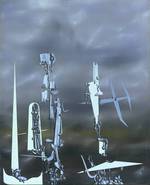 The Invisibles |
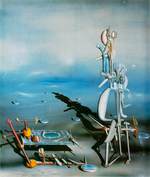 Indefinite Divisibility |
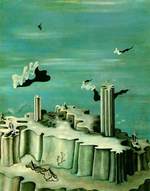 Neither Legends nor Figures |
 Reply To Red |

|
Featured Artist at the e.Gallery this week is a 20th Century artist, Frida Kahlo [Mexican, 1907-1954] Link: https://fineart.elib.com/fineart.php?dir=Alphabetical/Kahlo_Frida Magdalena Carmen Frieda Kahlo y Calderón de Rivera (born July 6, 1907, Coyocoán, Mexico, died July 13, 1954, Coyocoán), Mexican painter. The daughter of a German Jewish photographer, she had polio as a child and at 18 suffered a serious bus accident. She subsequently underwent some 35 operations; during her recovery, she taught herself to paint. She is noted for her intense self-portraits, many reflecting her physical ordeal. |
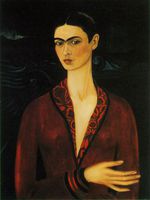 Self-portrait |
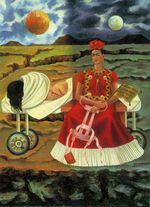 Tree of Hope |
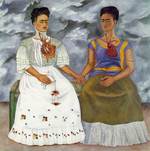 The Two Fridas |
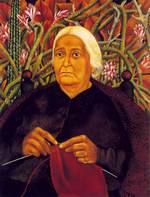 Portrait of Dona Rosita Morillo |
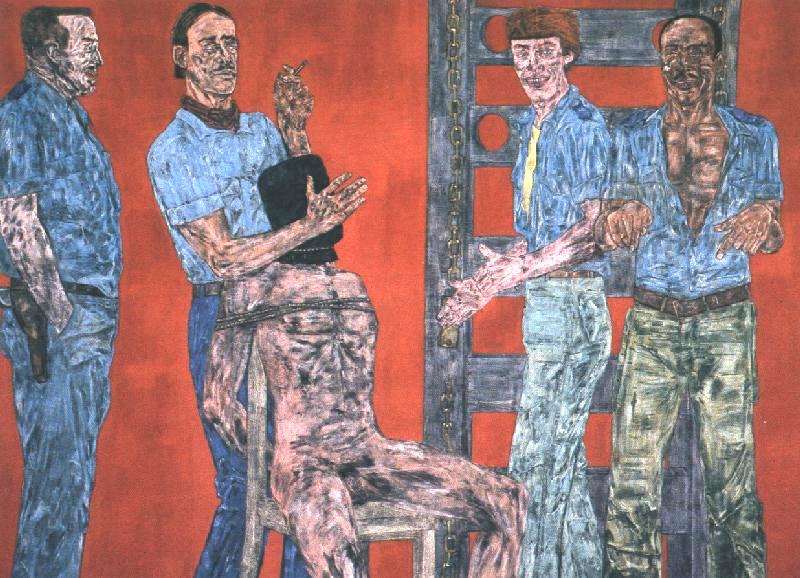
|
Featured Artist at the e.Gallery this week is a 20th Century artist, Leon Golub [American, 1922-] Link: https://fineart.elib.com/fineart.php?dir=Alphabetical/Golub_Leon |
|
|
|
|
|

|
Featured Artist at the e.Gallery this week is a 20th Century artist of the Fauvist movement, Maurice de Vlaminck [French, 1876-1958] Link: https://fineart.elib.com/fineart.php?dir=Alphabetical/Vlaminck_Maurice_de Maurice de Vlaminck (Paris 1876 – Rueil-la-Gadelière 1958) was three years old when his family moved from Paris to Vésinet. He first pursued the same musical career as his parents, who were both musicians, leaving his home as a trained double-bass player in 1892 to move to Chatou near Versailles. After absolving his military service in Vitré Maurice Vlaminck worked as a musician until he accidentally met André Derain in 1900. It was Derain who kindled Vlaminck’s artistic ambitions. He decided to become a painter and rented an old hut in which he and Derain shared a studio. A crucial turning point in Vlaminck’s artistic development was a visit to a van Gogh exhibition in Paris in the following year. In 1902 the young painter met Henri Matisse, who encouraged him to exhibit at the “Salon des Indépendents”. In 1905 Maurice Vlaminck had a group exhibition with Matisse, Derain, Friesz, Manguin and others at the “Salon d’automne”. The radically new colour scheme with large areas of pure colour inspired the critic Vauxelles to refer to the artists as the “Fauves”. The lively acceptance of this new painting style is reflected in the following acquisition of Vlaminck’s entire work by the art dealer Ambroise Vollard. He also arranged the artist’s first one-man exhibition in 1906. A brief interest in Cubism is merely reflected in a short intermezzo of a few Cubist compositions. Maurice Vlaminck’s artistic work was interrupted for four years in 1914 when he was drafted into the war. After his release Vlaminck established a small studio in Paris where he prepared for his next exhibition. It took place in 1919 at Druet, bringing about the artist’s definite break-through. The show was so successful that he was able to buy a house in Valmondois in the same year. Here, in this rural environment, Vlaminck was finally able to develop his own style as a landscape painter. His interest in rural landscapes never ceased, even after his move to the Département Eure-et-Loire in 1925. His work was honoured in numerous international exhibitions during the 1930s. The last years of Maurice Vlaminck’s life were determined by his friendship with the Swiss doctor Sigmund Pollag, who collected the artist’s graphic oeuvre and donated it to the Kunstmuseum Bern in 1970. Vlaminck wrote more than 20 books, including autobiographic texts. |
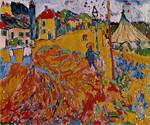 The Circus |
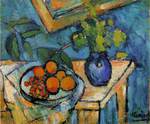 Still Life |
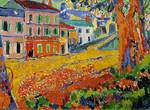 Restaurant at Marly-le-Roi |
 Portrait of a Woman |

|
Featured Artist at the e.Gallery this week is a 18th Century artist, Giovanni Domenico Ferretti [Italian, 1692-1747] Link: https://fineart.elib.com/fineart.php?dir=Alphabetical/Ferretti_Giovanni_Domenico Giovanni Domenico Ferretti (Giandomenico), also called Giandomenico d’Imola (1692–1768) was an Italian Rococo style painter from Florence. According to the contemporary Giovanni Camillo Sagrestani, Ferretti was a pupil of the Bolognese painter Giuseppe Maria Crespi. Others say he worked with painter Giovanni Gioseffo dal Sole. He returned to Florence with a letter of recommendation of Cardinal Gozzadini seeking patronage from Cosimo III de’ Medici. He found work in the studio of Tommaso Redi and Sebastiano Galeotti. He travelled to Bologna to work under Felice Torelli and then resettled in Florence in 1715. Ferretti soon joined the Florentine Accademia del Disegno, where he later taught painting but also designed tapestries for the Medici. He found abundant patronage in fresco painting for the Florentine Abbey (Badia Fiorentina), the Chapel of San Giuseppe in the Duomo, and the altar and cupola of the Church of San Salvatore al Vescovo. One of his most important works was the decoration of the ceiling of the Church of Santa Maria del Carmine, since lost in a fire. Ferretti’s fresco style was influenced by Sebastiano Ricci’s lively, colourful, and pastel-hued frescoes in the Palazzo Marucelli-Fenzi. Ferretti himself decorated the Palazzo Amati Cellesi in Pistoia, the Palazzo Chigi Sansedoni in Siena, and the Villa Flori in Pescia. The frescoes for the cupola of the cathedral of San Zeno in Pistoia are attributed to him. |
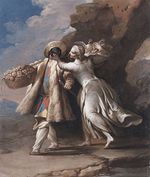 Arlequín campesino |
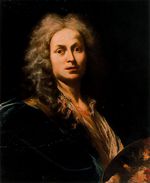 Self-Portrait of Gian Domenico Ferretti |
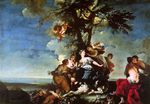 The Rape of Europa |
 Santo franciscano |
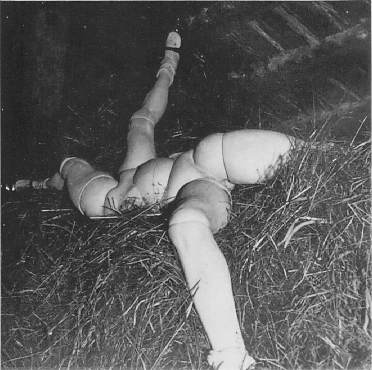
|
Featured Artist at the e.Gallery this week is a 20th Century artist of the Surrealist movement, Hans Bellmer [French, 1902-1975] Link: https://fineart.elib.com/fineart.php?dir=Alphabetical/Bellmer_Hans |
 La Poupee (The Doll) |
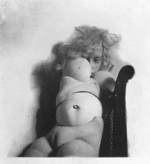 La Poupee (The Doll) |
|
|